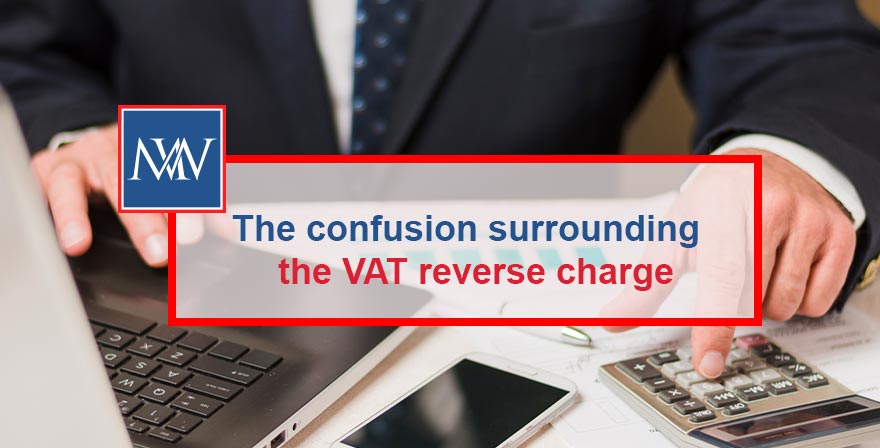
The confusion surrounding the VAT reverse charge
VAT can be confusing at the best of times, with the reverse charge being arguably one of the more complex applications. It does not help that different rules depend on different scenarios. For example, the reverse charge mechanism does not apply in the case of a zero-rated supply of services (e.g. most food items and children’s clothing).
Under the UK VAT system, the supplier usually pays the balance of VAT owing to HMRC but with the reverse charge it is the other way round. Instead, the buyer customer is deemed to be the ‘end user’ and as such makes the payment (the end user being someone not making an onward supply). When the reverse charge mechanism applies, the buyer customer must apply (‘self-assess’) the same rate of VAT that would apply if it was a domestic transaction.
Where a business-to-business relationship exists, the place of supply is where the customer resides. Therefore, where a UK VAT registered supplier makes a sale of services to a non-UK customer (whether VAT registered in their country of registration or not), the supplier does not charge VAT as the transaction is outside the scope of VAT.
However, should the customer’s business be VAT registered in a VAT-operational country, they will either show the reverse charge on their VAT return or treat the purchase as counting towards the VAT registration threshold in their own country. If the customer’s business is a non-EU company, the supply is still deemed to be where the customer resides and any local sales taxes are usually the customer’s responsibility. After Brexit, businesses based in Great Britain (England, Scotland and Wales) can no longer apply the reverse charge to EU sales. However, businesses based in Northern Ireland can still apply the reverse charge as normal because they are still within the EU VAT area.
Services supplied to non-business overseas customers are generally supplied where the supplier belongs. In this instance the supply follows the usual UK supply rules, i.e. UK VAT is charged if the supply is standard rated.
However, when a UK VAT registered business receives a service from overseas, the reverse charge applies. The net of VAT figure is used for both the sale and purchase, effectively treating the transaction as both a sale and a purchase i.e. as a sale to itself.
The scenario most frequently encountered concerning the reverse charge is under the ‘domestic reverse charge’ (DRC). The DRC applies where a UK VAT registered business supplies or receives specified standard or reduced VAT rate services reported under the construction industry scheme (CIS) Note that the word ‘domestic’ refers to UK to UK business transactions whereas typically the rules relate to cross-border transactions – this charge is separate from the non-UK reverse charge rules.
Under the DRC rules, where a VAT registered subcontractor invoices a VAT registered contractor for their services reported under CIS, the subcontractor does not charge VAT. Instead, it will be the contractor’s responsibility to undertake the ‘reverse charge’ and declare both the input and output VAT on their VAT return. This includes materials supplied by a builder as part of their work but not materials bought on a stand-alone basis without services.
Both parties must be VAT registered for the DRC rules to apply, but only the customer/contractor needs to be CIS registered. Therefore, where a VAT registered supplier/subcontractor supplies services to a non-VAT registered contractor, the DRC rules will not apply and VAT is charged on supplies at 5% or 20% as relevant. If the supplier/subcontractor is not registered for CIS, the DRC rules can still apply. However, the contractor will need to deduct CIS at 30% instead of 20%.
Practical point
If the reverse charge rules apply, the practicalities of completing the return will mean that the supplier/subcontractor issues the invoice without VAT but with a note as to the amount of VAT to be declared by the customer, or at least the rate of VAT. The supplier/subcontractor records the sale in box 6 of their VAT return (being a sale), subject to any partial exemption adjustments.
Need Accountancy Support?
For information on bespoke training, or if you have any other questions for Makesworth Accountant, please fill in your details below
















 151
151